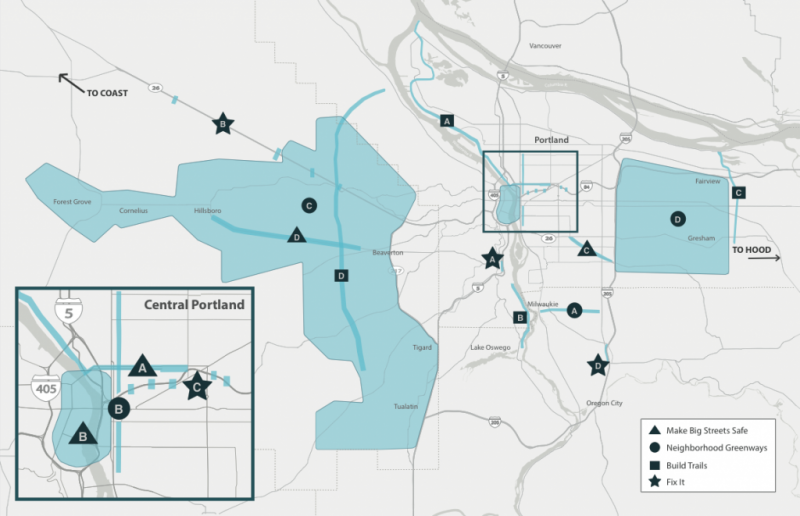
Oregon’s leading bike advocacy group has named sixteen projects in four categories as their top bike infrastructure priorities for the region.
Released Tuesday, it’s the first update of the Bicycle Transportation Alliance‘s “Blueprint for World-Class Bicycling” since 2005, when the organization named 40 such projects. This time around, the group sought to focus on a smaller number in an effort to increase the pressure on behalf of the selected projects.
The BTA sorted the projects on its list into four key concepts:
The BTA also called out the potential for a “Hood to Coast Trail Network” that could one day become a major tourist and recreation destination by linking Portland and Mount Hood to the Pacific Ocean.
You can check out the BTA’s description of all its priority projects here, and also sign up to receive BTA alerts about the projects. You can also download the full Blueprint as a PDF.
The BTA’s selection of these projects was based on input from 900 people who responded to an online survey, plus another 120 who attended 16 community meetings across the metro area over the course of about three months.
In all, the work required more than 1,000 hours of staff time. It was completed with support from the Bullitt Foundation, Bikes Belong, Nike and multiple in-kind donors.
In an interview last week, BTA Director Rob Sadowsky said the organization was forced to leave important projects out of the Blueprint, but plans to share research and advocacy on behalf of its Blueprint projects with other organizations that may have different priorities.
“We see the 16 projects as being almost metaphorical,” Sadowsky said. “You can plug and play: you can take out North Broadway, for example, and plug in North Williams. … You can take out Foster and put in Sandy.”
Sadowsky said they’d tried to select projects that they felt wouldn’t happen without a clear push from the BTA.
When projects are completed, Sadowsky said, the BTA plans to swap in other priorities to replace them.
“We don’t want to make this static,” Sadowsky said. “We’ll make sure that there’s always 16.”

